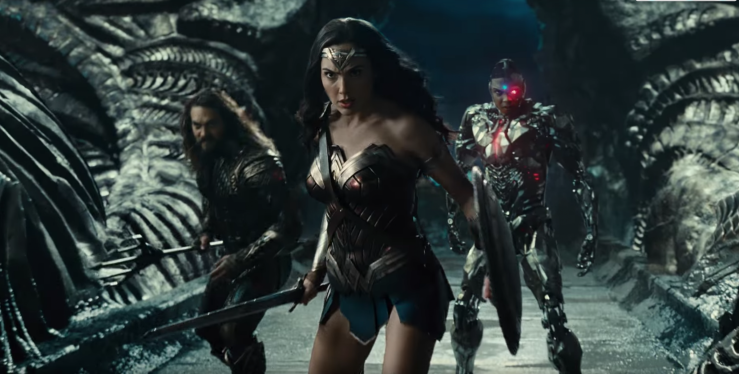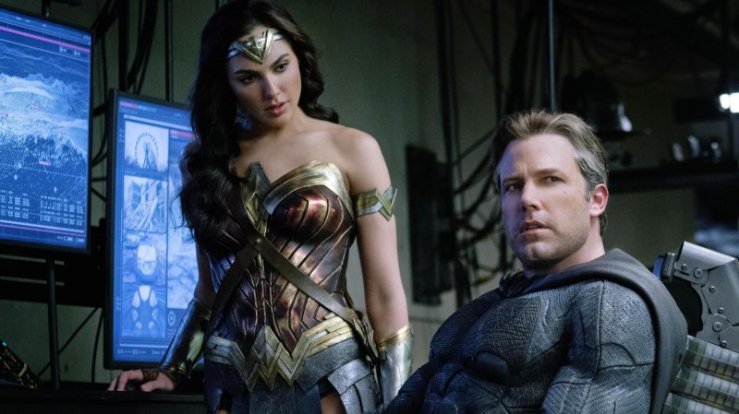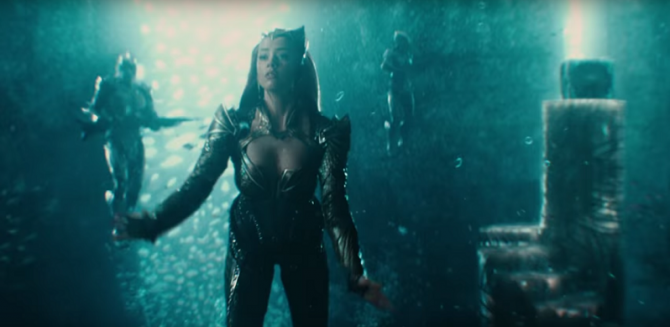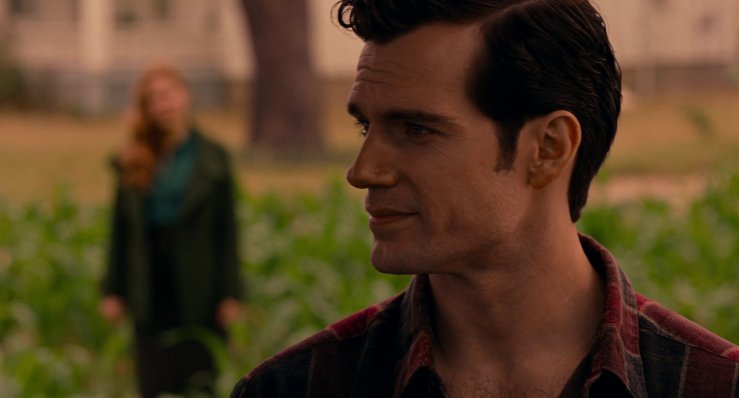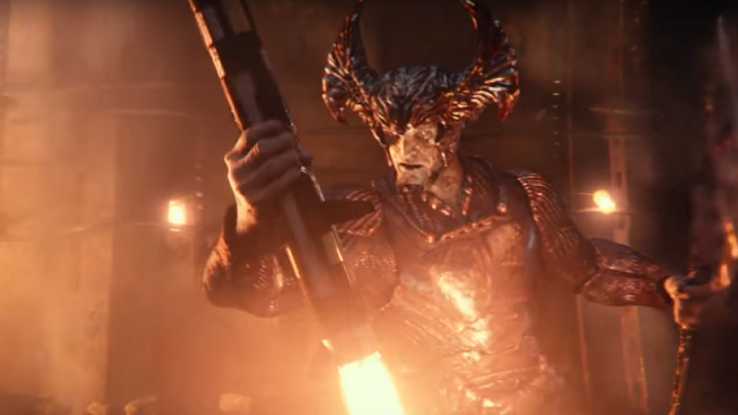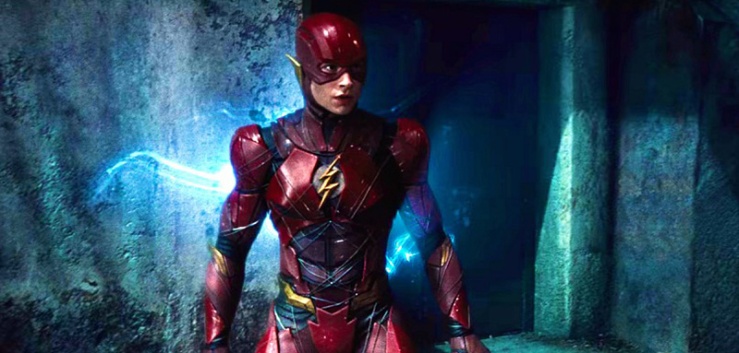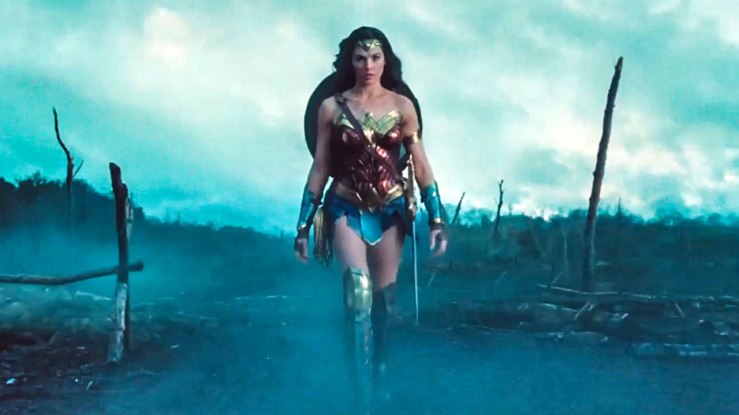
Year after year, I hear this argument: why does the Academy not recognize popular films that people actually see? Well, the truth is they do. Best Picture nominees like Inception (2010), The Revenant (2015), The Lord of the Rings (2001-2003), and many others in recent years, were all massive box office hits for the time. In fact, there’s usually at least one Best Picture nominee that makes north of $400 million at the worldwide box office, and that’s nothing to scoff at. But the argument persists because the people making it mean something else entirely: why does the Academy never nominate superhero movies for major awards? Now if they asked this question instead of the former, they’d actually have ground to stand on. And this year especially, fans seemed ever more eager to see a superhero movie nominated for Best Picture, namely Logan or Wonder Woman. Alas, it didn’t happen, but should it happen?

Now it’s important to note that while no superhero movie has ever been nominated for Best Picture, a few of them have been nominated for (and even won) Oscars in the past. Superman (1978), Spider-Man (2002) and Batman Begins (2005) were all nominated for technical awards like cinematography and editing; Spider-Man 2 (2004) and The Incredibles (2004) both took home some wins in the same year; and even Suicide Squad (2016) somehow managed to win an Oscar for Best Makeup and Hairstyling. I still don’t understand how that happened. But what about the major awards for acting and writing? Sure, the Marvel Cinematic Universe usually sneaks itself into the Best Visual Effects lineup, but it’s extremely rare to see a superhero movie nominated for what’s referred to as the “above-the-line” awards. You’d think characters who can leap tall buildings in a single bound would have a much easier time reaching those heights.
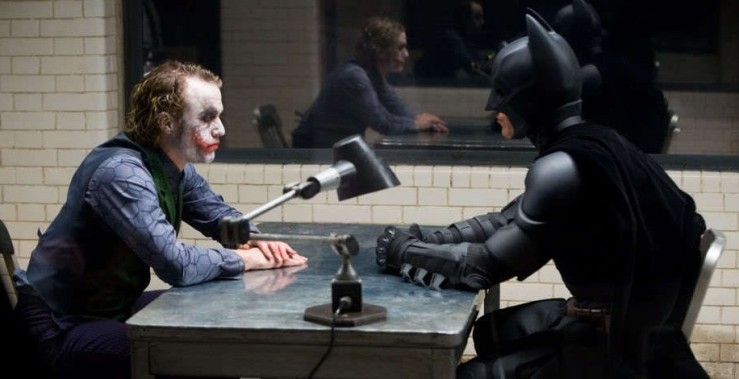
Again, it has happened. Just this year, Logan was nominated for Best Adapted Screenplay. The aforementioned The Incredibles was nominated for Best Original Screenplay. And lest we forget, The Dark Knight (2008) was a monster at the nominations that year, scoring eight nominations and two wins, including a posthumous Best Supporting Actor award for Heath Ledger’s portrayal of the Joker. So my initial argument will be focused on these three films, particularly what makes them stand out against other superhero films. Everyone’s talked about why The Dark Knight is the best in its genre, so I won’t say too much about it. It really did elevate the genre to a new level, not just in quality, but by blending it with other genres. It’s not just an action, but also a crime drama and a political thriller. The ensemble cast includes businessmen, politicians, and beat cops, all of whom are entangled in the rivalry between Batman and the Joker while still trying to uphold peace in one of the most chaotic cities on Earth. With themes of order, chaos, fairness, and humanity in play with the main cast members, it’s no wonder fans were outraged when Christopher Nolan’s take on the Batman mythos wasn’t a bigger hit with the Academy than it was.
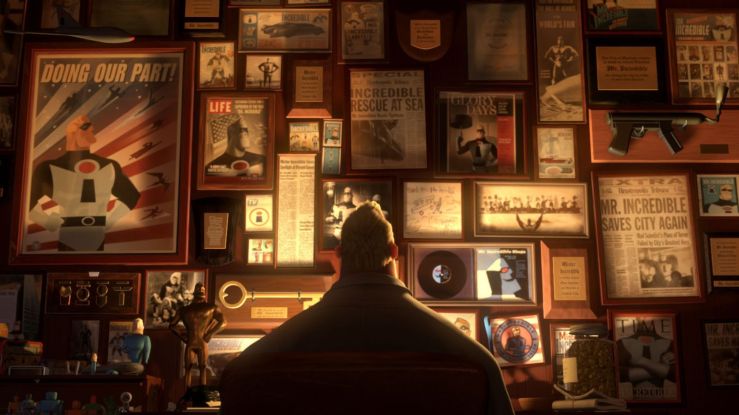
What about The Incredibles? It won a couple Oscars, including Best Animated Feature. Okay, that’s not surprising for a Pixar film, but it does go to show how talented the storytellers at Pixar are at creating layered stories that appeal to adults while still being accessible to children. Remember how a man attempts to commit suicide in the first five minutes? And then five minutes later sues Mr. Incredible for thwarting said suicide attempt? Yeah, this was dark even for Pixar. But among many more adult themes, the core story is about a middle-aged man going through a mid-life crisis. That man just so happens to have superhuman strength. Logan has similar themes with regard to age, which is fitting since it’s the last time we’ll ever see Hugh Jackman and Patrick Stewart as Wolverine and Professor X. Here, both of these characters that we’ve seen in glory and dignity for almost twenty years have been broken down by the ravages of time, suffering from Alzheimer’s, failing immune systems, and crushed souls after all of their loved ones have passed on. Going back to genre-bending, it also functions as a western set in a dystopian future. The main characters, once again, happen to be superpowered beings that we know and love.

So we know that The Incredibles got its shot thanks to the power of Pixar, and Logan may have only gotten its screenplay nod thanks to a weak year for movies based on pre-existing source material, but how close did they get to Best Picture nods? Well, I’d say a lot of these films and others got pretty close. Logan was selected as one of the ten best films of the year by the National Board of Review. The Incredibles, The Dark Knight, Wonder Woman, and others were all on similar lists by the American Film Institute. And along with Deadpool (2016), those three were also nominated for the top prize at the Producers Guild of America, the winner of which usually going on to win Best Picture at the Oscars. A lot of the films I’ve mentioned here have done something different from other superhero films, whether it’s Wonder Woman as a period piece about the innate goodness of humanity or Deadpool as a screwball comedy making fun of other superhero tropes.
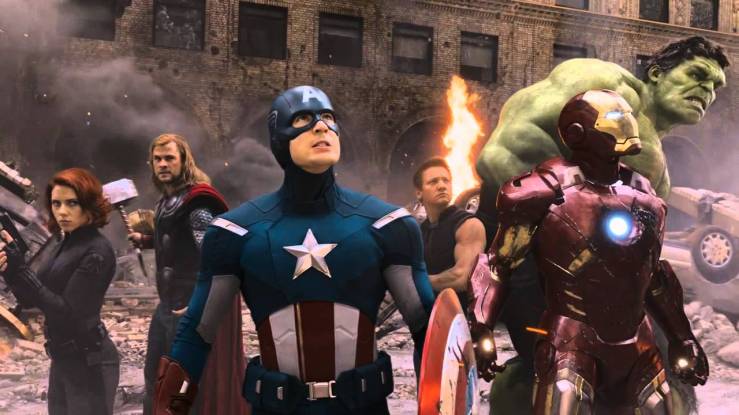
As close as they’re getting, why have we yet to see a superhero film score a Best Picture nod at the Oscars? Many might cite the demographics of the Academy voters and that most of them are old white men. Some bring up the “prestige factor” that comes with the Oscars, which are often referred to as the Super Bowl of movies. One might even call it stupidity, and there’s plenty of that going around in the Academy regardless of what superhero movie didn’t get a nomination this year. All of these arguments have some merit to them. But if you want my take on it, and I assume you do since you’re reading this article, I think it’s because most superhero movies aren’t good enough for Best Picture recognition. There are a few I would’ve nominated. I still say The Dark Knight and The Avengers (2012) were the best films of their respective years, and I’d even make arguments for X-Men (2000), Watchmen (2009), and a couple others. But most of the time, they still have noticeable flaws.
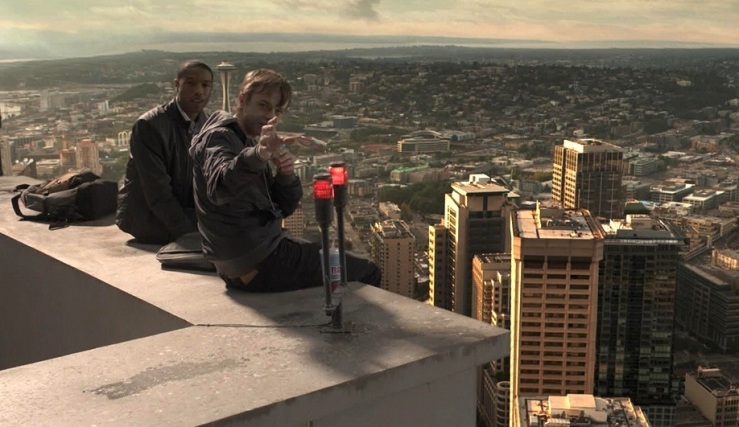
No movie is perfect. And while it’s true that superhero movies take more risks on a technical level than most other films do, 1) most of that has to do with their insanely high production budgets, and 2) not all of the risks pay off. Whether it’s noticeably bad CGI, silly-looking costumes, uneven pacing as a result of introducing audiences to a completely different world that’s kinda still our own but not really, there’s a lot to poke fun at despite how good many of them are. And in a competitive race like the Oscars, voters are more likely to lean towards something that got everything right than something that swung for all the pitches but got two strikes and three balls. But the genre is also still very young, at least as far as the mainstream appeal is. While we got big screen takes of Superman and Batman in the 80s, almost all of the current success of the superhero genre has been in the 2000s and beyond, and almost entirely within two properties: Marvel and DC. The genre needs to branch out and tell other stories before it can win over Academy voters, and I think it’s on the right path to doing that. Logan and The Dark Knight are perfect examples of that within the major properties, so imagine what more niche properties can do on a narrative level. I’d love to see another movie like Chronicle (2012), and more than that I’d love to see it be so good it’s a frontrunner for Best Picture. But until the genre matures, I think it’ll be awhile before a movie achieves that kind of superpower.



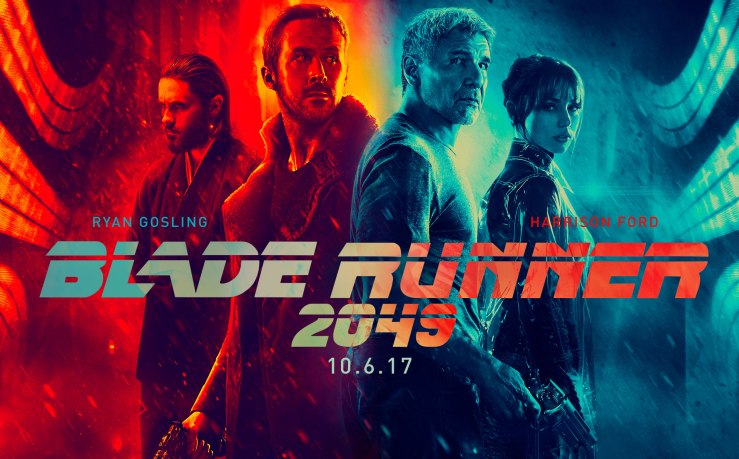 10. Blade Runner 2049 (dir. Denis Villeneuve) – Making a sequel to one of the greatest sci-fi films of all time was never going to be an easy task, but Dis- I mean, Fox saw something golden when they hired Denis Villeneuve to revisit Replicants and their struggle for life and agency. The cinematography by Roger Deakins is the perfect lens to reintroduce audiences to Los Angeles of the distant future, and the objects of his shots remind us that this is the same world featured in the original Blade Runner (1982), but evolved 30 years into its future and now more noticeably split from our own timeline. The cast, led by Ryan Gosling and Harrison Ford, further sells the idea that artificial intelligence populates this universe just as much as organic life, and the overall product gives us an evolution to look forward to in a potential third installment. Whether we get that third film or not, Blade Runner 2049 is a must-see for sci-fi fans of any era.
10. Blade Runner 2049 (dir. Denis Villeneuve) – Making a sequel to one of the greatest sci-fi films of all time was never going to be an easy task, but Dis- I mean, Fox saw something golden when they hired Denis Villeneuve to revisit Replicants and their struggle for life and agency. The cinematography by Roger Deakins is the perfect lens to reintroduce audiences to Los Angeles of the distant future, and the objects of his shots remind us that this is the same world featured in the original Blade Runner (1982), but evolved 30 years into its future and now more noticeably split from our own timeline. The cast, led by Ryan Gosling and Harrison Ford, further sells the idea that artificial intelligence populates this universe just as much as organic life, and the overall product gives us an evolution to look forward to in a potential third installment. Whether we get that third film or not, Blade Runner 2049 is a must-see for sci-fi fans of any era. 9. Coco (dir. Lee Unkrich)/Your Name (dir. Makoto Shinkai) – In a year where most animation was utter garbage, it was nice to know that audiences could still count on the industry’s biggest powerhouses to deliver quality entertainment: Pixar and anime. And both of their offerings this year are real tear-jerkers. In Coco, the emotional weight comes from a small family story made grand by setting it in the Land of the Dead, but it never loses sight of its cultural roots. The song “Remember Me” is used to great effect here, sung with the same lyrics but different meaning each time it’s played, creating a memorable musical experience that will be reinterpreted again and again for years to come.
9. Coco (dir. Lee Unkrich)/Your Name (dir. Makoto Shinkai) – In a year where most animation was utter garbage, it was nice to know that audiences could still count on the industry’s biggest powerhouses to deliver quality entertainment: Pixar and anime. And both of their offerings this year are real tear-jerkers. In Coco, the emotional weight comes from a small family story made grand by setting it in the Land of the Dead, but it never loses sight of its cultural roots. The song “Remember Me” is used to great effect here, sung with the same lyrics but different meaning each time it’s played, creating a memorable musical experience that will be reinterpreted again and again for years to come.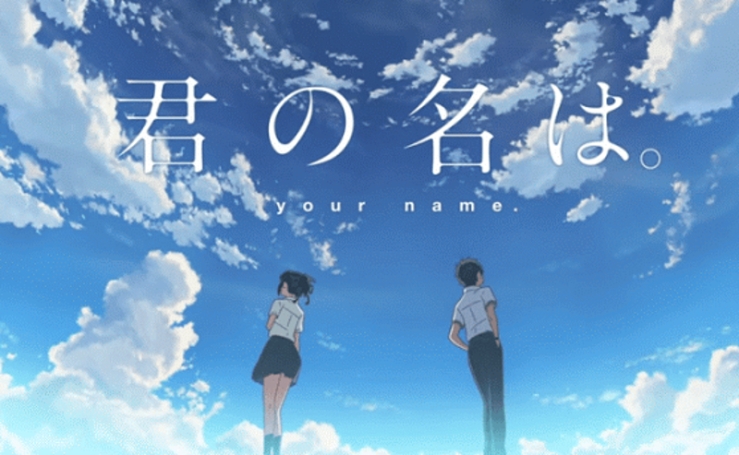 But this wasn’t the only wonderful animated offering we got, for in Your Name we were given a grand epic made small and intimate thanks to its use of animation. Gorgeous shots never let us forget the size of the story, but the focus is more on the characters of Taki and Mitsuha. The science or magic or whatever is not the main draw of the plot, but rather a plot device to enable these characters to go on this journey of self-discovery that ultimately impacts the lives of everyone around them. It’s a truly timeless story that could never be recaptured in any remake, but many will find their own interpretation of this magical experience.
But this wasn’t the only wonderful animated offering we got, for in Your Name we were given a grand epic made small and intimate thanks to its use of animation. Gorgeous shots never let us forget the size of the story, but the focus is more on the characters of Taki and Mitsuha. The science or magic or whatever is not the main draw of the plot, but rather a plot device to enable these characters to go on this journey of self-discovery that ultimately impacts the lives of everyone around them. It’s a truly timeless story that could never be recaptured in any remake, but many will find their own interpretation of this magical experience. 8. mother! (dir. Darren Aronofsky) – It’s safe to say we all knew we were gonna get something disturbing and controversial when we walked into a Darren Aronofsky film. What we didn’t know was just how surreal this film would be. Everyone has a different outlook on it, but the most common seems to be that it’s an allegory to major events in the Bible (the Fall of Man, the Great Flood, etc.) from the perspective of the earth as if it was a living thing. That living thing in this instance is played by Jennifer Lawrence, who the cinematography proves you can never get enough of. Aronofsky’s humanization of God, played by Javier Bardem, is both relatable and antagonistic, and while that would seem like an obvious turn-off to many Christian viewers, I actually think it’s one of the film’s greatest strengths. Aronofsky is no stranger to challenging our views on everything from drugs to sports, and while this one certainly won’t convert everyone to whatever his viewpoint is, the fact that people are still talking about what it means proves that while we may not completely understand mother!, it did something right.
8. mother! (dir. Darren Aronofsky) – It’s safe to say we all knew we were gonna get something disturbing and controversial when we walked into a Darren Aronofsky film. What we didn’t know was just how surreal this film would be. Everyone has a different outlook on it, but the most common seems to be that it’s an allegory to major events in the Bible (the Fall of Man, the Great Flood, etc.) from the perspective of the earth as if it was a living thing. That living thing in this instance is played by Jennifer Lawrence, who the cinematography proves you can never get enough of. Aronofsky’s humanization of God, played by Javier Bardem, is both relatable and antagonistic, and while that would seem like an obvious turn-off to many Christian viewers, I actually think it’s one of the film’s greatest strengths. Aronofsky is no stranger to challenging our views on everything from drugs to sports, and while this one certainly won’t convert everyone to whatever his viewpoint is, the fact that people are still talking about what it means proves that while we may not completely understand mother!, it did something right. 7. The Disaster Artist (dir. James Franco) – Very rarely will you see a biopic told as a straight-up comedy. But when the subject is Tommy Wiseau, the mastermind behind The Room (2003), you don’t really have a choice. The star of this film is James Franco in both the director’s chair and the lead role, and he understands Wiseau about as well as anyone is capable of understanding him. He nails the weird eccentricities that Tommy is known for, but he also keeps him grounded in some level of humanity that reminds us that, despite many of our suspicions, he is not an alien from a spoon-obsessed planet. Whether you’ve seen the best worst movie ever made or not, The Disaster Artist is the funniest movie of the year, and well worth a double feature.
7. The Disaster Artist (dir. James Franco) – Very rarely will you see a biopic told as a straight-up comedy. But when the subject is Tommy Wiseau, the mastermind behind The Room (2003), you don’t really have a choice. The star of this film is James Franco in both the director’s chair and the lead role, and he understands Wiseau about as well as anyone is capable of understanding him. He nails the weird eccentricities that Tommy is known for, but he also keeps him grounded in some level of humanity that reminds us that, despite many of our suspicions, he is not an alien from a spoon-obsessed planet. Whether you’ve seen the best worst movie ever made or not, The Disaster Artist is the funniest movie of the year, and well worth a double feature. 6. Three Billboards Outside Ebbing, Missouri (dir. Martin McDonagh) – Probably the most timely film of the year, this tale of sexual assault being forced in the forefront of the establishment’s agenda is carried entirely by its performances. Frances McDormand leads the film as a deceased rape victim’s mother who sets up three billboards to draw attention to her case and force the local police department to do something about a rapist still out there. While it does serve as a story about going after sexual assault, it’s also a story about anger begetting anger and how that unhealthy cycle needs to end in order to move forward. Because of this, the timeliness of the film rings even more because its focus was on its own story and themes rather than grabbing an Oscar. It most certainly will be going for Oscars, but in this case that’s icing on the cake that is Three Billboards Outside Ebbing, Missouri.
6. Three Billboards Outside Ebbing, Missouri (dir. Martin McDonagh) – Probably the most timely film of the year, this tale of sexual assault being forced in the forefront of the establishment’s agenda is carried entirely by its performances. Frances McDormand leads the film as a deceased rape victim’s mother who sets up three billboards to draw attention to her case and force the local police department to do something about a rapist still out there. While it does serve as a story about going after sexual assault, it’s also a story about anger begetting anger and how that unhealthy cycle needs to end in order to move forward. Because of this, the timeliness of the film rings even more because its focus was on its own story and themes rather than grabbing an Oscar. It most certainly will be going for Oscars, but in this case that’s icing on the cake that is Three Billboards Outside Ebbing, Missouri. 5. Baby Driver (dir. Edgar Wright) – Fresh off of not making Ant-Man (2015), Edgar Wright brings us his own American heist film with a killer soundtrack and phenomenal car chases. He absolutely deserves an Oscar nomination for pairing every action beat with a musical beat and still making it stand on its own. All the work that went into the cinematography, editing, and sound design paid off in even slower date scenes between Baby and Debora. Speaking of, the romance is believable enough to get us invested in the long-term personal stakes for Baby as well as the immediate stakes of each action scene. The thrills never stop, but there’s still time for the audience to breathe in between chases and gunfights, ultimately leading to a symphonic creation of sight and sound. If you’re looking for the most vibrant experience of sight and sound, then hop in and take a ride with Baby Driver.
5. Baby Driver (dir. Edgar Wright) – Fresh off of not making Ant-Man (2015), Edgar Wright brings us his own American heist film with a killer soundtrack and phenomenal car chases. He absolutely deserves an Oscar nomination for pairing every action beat with a musical beat and still making it stand on its own. All the work that went into the cinematography, editing, and sound design paid off in even slower date scenes between Baby and Debora. Speaking of, the romance is believable enough to get us invested in the long-term personal stakes for Baby as well as the immediate stakes of each action scene. The thrills never stop, but there’s still time for the audience to breathe in between chases and gunfights, ultimately leading to a symphonic creation of sight and sound. If you’re looking for the most vibrant experience of sight and sound, then hop in and take a ride with Baby Driver. 4. Dunkirk (dir. Christopher Nolan) – If there’s one director whose body of work continuously takes high-concept stories and tells them in artistically unique ways, it’s Christopher Nolan, and his latest film is more proof that he can still reach new audiences. The film tells its story from three perspectives (land, sea, air) over three different time periods (week, day, hour), and somehow weaves them together in a heart-pounding tension-filled epic. Though the characterization may be thin in some areas, it gives us everything we need to know about the characters and their struggle to survive the onslaught from Nazi Germany. Watching this movie, you will feel like you’re on the beach with the soldiers, or in the air with the Spitfire planes. When everything collides together in the finale, you will leave the theater (because this movie deserves to be seen on the big screen) truly exhilarated and breathless. Dunkirk may not be rooted in anyone’s personal story, but its truth comes from the experience.
4. Dunkirk (dir. Christopher Nolan) – If there’s one director whose body of work continuously takes high-concept stories and tells them in artistically unique ways, it’s Christopher Nolan, and his latest film is more proof that he can still reach new audiences. The film tells its story from three perspectives (land, sea, air) over three different time periods (week, day, hour), and somehow weaves them together in a heart-pounding tension-filled epic. Though the characterization may be thin in some areas, it gives us everything we need to know about the characters and their struggle to survive the onslaught from Nazi Germany. Watching this movie, you will feel like you’re on the beach with the soldiers, or in the air with the Spitfire planes. When everything collides together in the finale, you will leave the theater (because this movie deserves to be seen on the big screen) truly exhilarated and breathless. Dunkirk may not be rooted in anyone’s personal story, but its truth comes from the experience. 3. Lady Bird (dir. Greta Gerwig) – A coming-of-age drama written and directed by an actress who has never quite caught on with anyone? Who’d have guessed this would be as big a hit as it is? Whereas most actors who try their hand at directing are already super famous, Greta Gerwig was kinda just there, popping up on screen but never standing out enough to attract attention. But behind the camera, she has heads turning because she understands pacing and character development, and uses her storytelling gifts to move so much along at such a fast rate while still keeping it natural. Though her script is strong, she has enough faith in her actors (particularly Saoirse Ronan and Laurie Metcalf) to let them carry certain scenes with little-to-no dialogue. And this is the first movie she’s directed on her own, so it’ll be interesting to see what Gerwig does with her career following Lady Bird.
3. Lady Bird (dir. Greta Gerwig) – A coming-of-age drama written and directed by an actress who has never quite caught on with anyone? Who’d have guessed this would be as big a hit as it is? Whereas most actors who try their hand at directing are already super famous, Greta Gerwig was kinda just there, popping up on screen but never standing out enough to attract attention. But behind the camera, she has heads turning because she understands pacing and character development, and uses her storytelling gifts to move so much along at such a fast rate while still keeping it natural. Though her script is strong, she has enough faith in her actors (particularly Saoirse Ronan and Laurie Metcalf) to let them carry certain scenes with little-to-no dialogue. And this is the first movie she’s directed on her own, so it’ll be interesting to see what Gerwig does with her career following Lady Bird.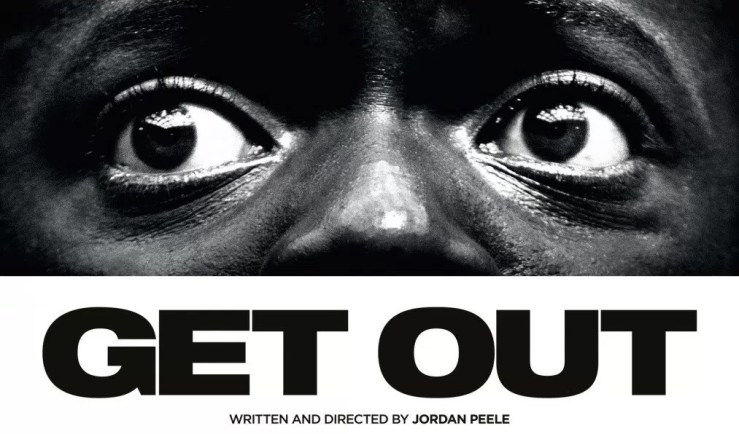 2. Get Out (dir. Jordan Peele) – A horror-comedy directed by half of Key and Peele? Get out! All jokes aside, this is a truly horrifying experience in the most unexpected ways. Without giving too much away, it would’ve beeen so easy to make the villains pure racists who just want to systemically kill non-whites, but the conspiracy lies so much deeper than that and makes us feel truly sick thinking about them. Part of that actually comes from the comedy, and this is where Jordan Peele’s background kicks in. Instead of going for a completely serious horror tone, Peele infuses the right jokes in all the right places, and not all of them are laugh-out-loud jokes that you would expect from sketch and stand-up comedy. The truth behind it is some people think their jokes are genuinely funny when they’re really offensive, and that’s what makes the scares work here. Everyone’s in on the joke, except you and Chris Washington. So if you’re looking for laughs and scares, Get Out is a movie that you definitely should’ve seen by now.
2. Get Out (dir. Jordan Peele) – A horror-comedy directed by half of Key and Peele? Get out! All jokes aside, this is a truly horrifying experience in the most unexpected ways. Without giving too much away, it would’ve beeen so easy to make the villains pure racists who just want to systemically kill non-whites, but the conspiracy lies so much deeper than that and makes us feel truly sick thinking about them. Part of that actually comes from the comedy, and this is where Jordan Peele’s background kicks in. Instead of going for a completely serious horror tone, Peele infuses the right jokes in all the right places, and not all of them are laugh-out-loud jokes that you would expect from sketch and stand-up comedy. The truth behind it is some people think their jokes are genuinely funny when they’re really offensive, and that’s what makes the scares work here. Everyone’s in on the joke, except you and Chris Washington. So if you’re looking for laughs and scares, Get Out is a movie that you definitely should’ve seen by now. 1. The Shape of Water (dir. Guillermo del Toro) – For the final entry on this list, we take a look at something that is both risky and conventional. I say conventional because it’s a standard “Beauty and the Beast” love story set in a different setting, and we’ve seen it done before in many different settings. But Guillermo del Toro knows exactly what changes to make in addition and where to go even further. Despite possessing a familiar humanoid build, the beastly aspects of the fish man are straight-up beastly, and anything that eats a cat can’t be human. And instead of the beast who is “cursed”, it’s the beauty. How? Why? We don’t really know, but there are hints dropped that I can’t write about here without spoiling too much. But those theories paired with the ultimate resolution sink it deeper into that “Beauty and the Beast” model, and that makes it an interesting role reversal. Of course the setting is utilized very well in 1950s suburban America, paying homage to traditional societal models of the era as well as creature features and Biblical epics of the time. And all of it is acted out by the year’s best cast, led by Sally Hawkins’ mesmerizing wordless performance. Honestly, there’s almost too much to be said about The Shape of Water, but I encourage you all to see it for yourselves and see what’s so beautiful about it.
1. The Shape of Water (dir. Guillermo del Toro) – For the final entry on this list, we take a look at something that is both risky and conventional. I say conventional because it’s a standard “Beauty and the Beast” love story set in a different setting, and we’ve seen it done before in many different settings. But Guillermo del Toro knows exactly what changes to make in addition and where to go even further. Despite possessing a familiar humanoid build, the beastly aspects of the fish man are straight-up beastly, and anything that eats a cat can’t be human. And instead of the beast who is “cursed”, it’s the beauty. How? Why? We don’t really know, but there are hints dropped that I can’t write about here without spoiling too much. But those theories paired with the ultimate resolution sink it deeper into that “Beauty and the Beast” model, and that makes it an interesting role reversal. Of course the setting is utilized very well in 1950s suburban America, paying homage to traditional societal models of the era as well as creature features and Biblical epics of the time. And all of it is acted out by the year’s best cast, led by Sally Hawkins’ mesmerizing wordless performance. Honestly, there’s almost too much to be said about The Shape of Water, but I encourage you all to see it for yourselves and see what’s so beautiful about it.

